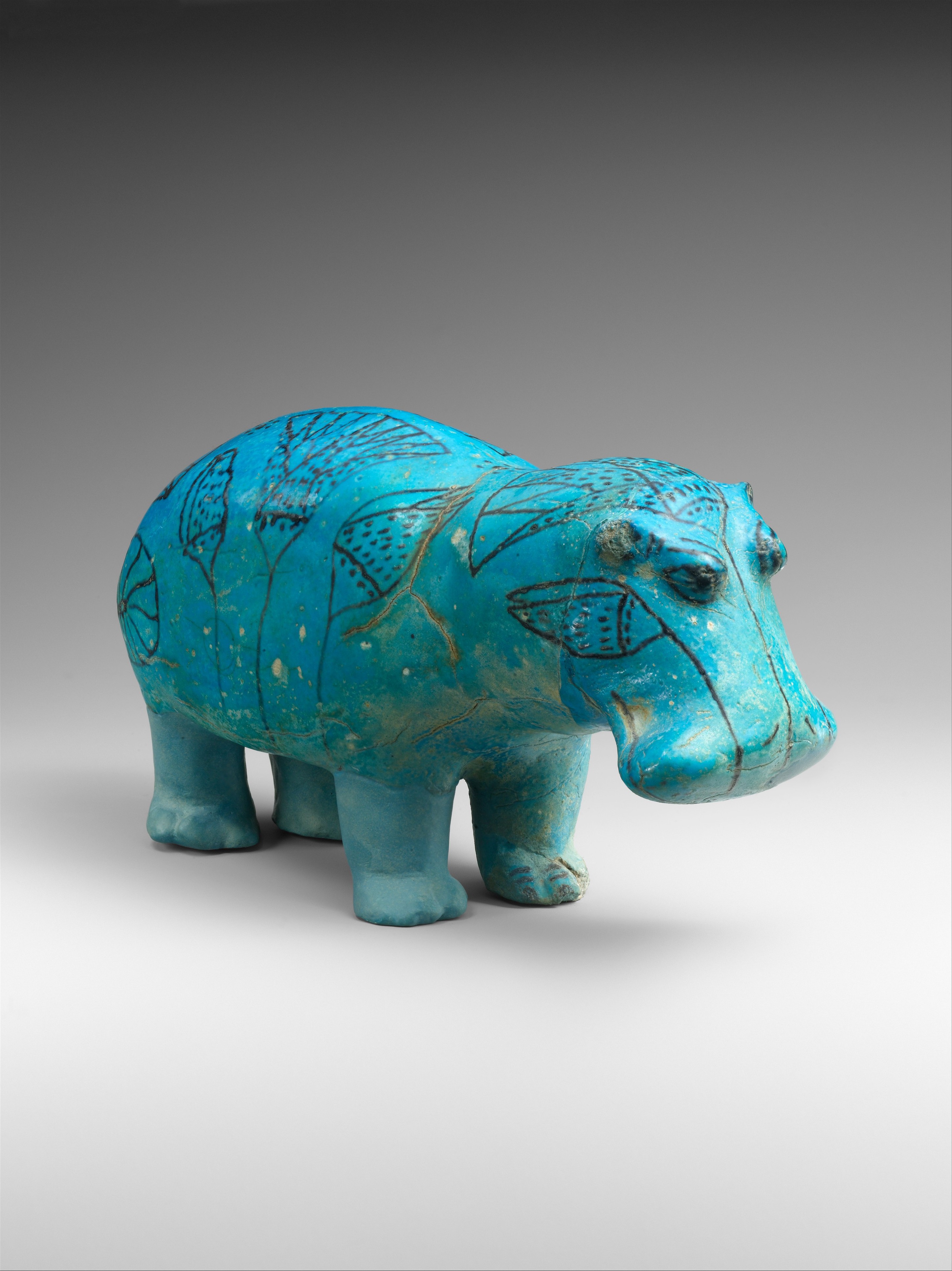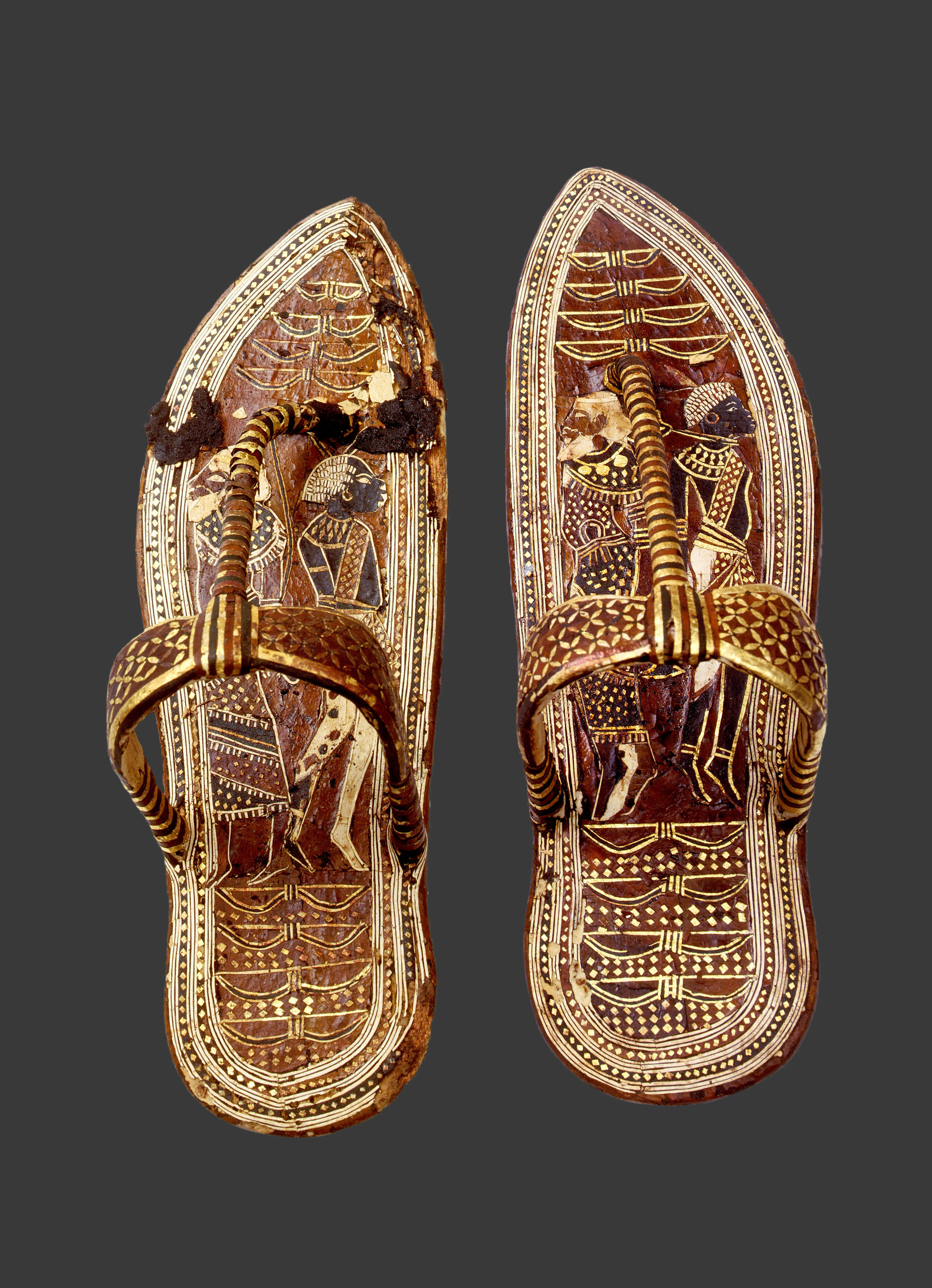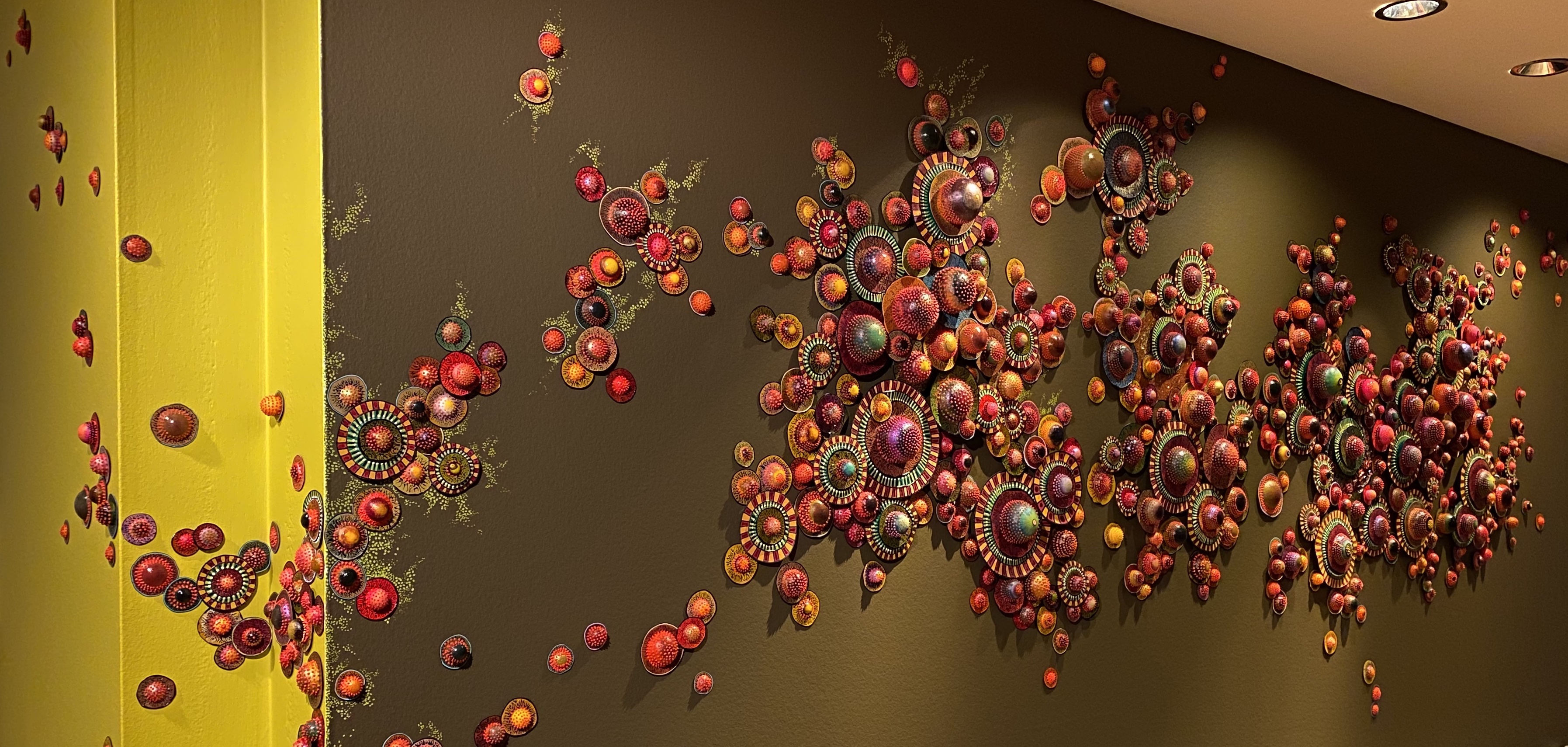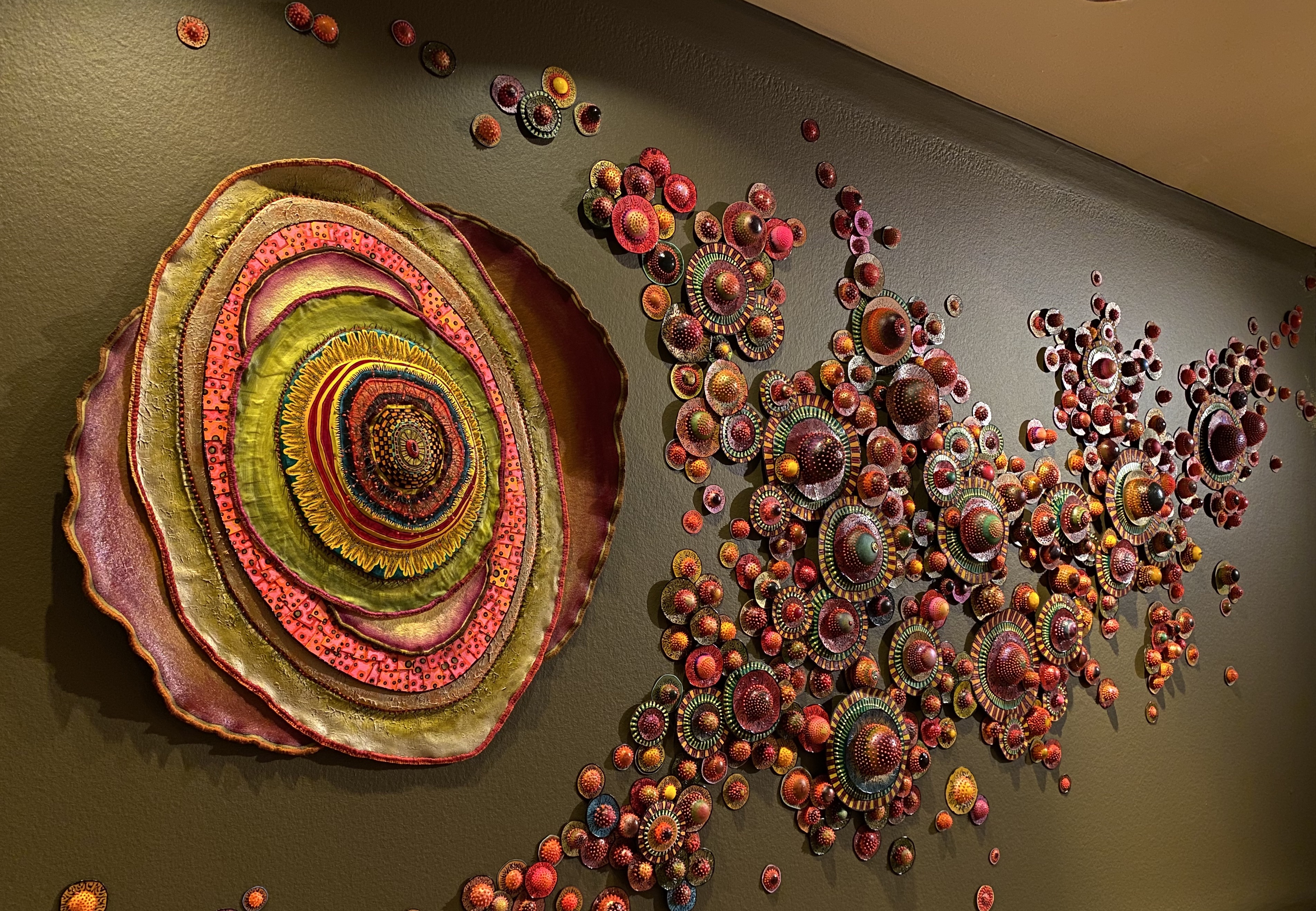The Cure Gives Shape to the Disease
- Amanda H. Hellman
- Rachel P. Kreiter
When we don’t understand the cause of a disease or how to treat it, we resort to magical thinking. — Elisa Gabbert
Were there something that could be called the typical COVID-19 lockdown experience in the US, a cornerstone of its earliest period would be spraying disinfectant — Windex, Lysol, Clorox, Method — on freshly delivered groceries. Over the earliest months of the pandemic, much of the general public, encouraged by the scientific community, sought safety and comfort in the eradication of fomites, or germs on surfaces. It was a little funny in a dark way, because it sounded so ridiculous and yet was so suddenly commonplace, to tweet, for example, that one was using “a Lysol wipe on an Apple.”1 By July 2020, Emanuel Goldman, writing in The Lancet, tried to disabuse the assumption that this was the most prevalent way to transmit COVID.2 (It is actually predominantly spread by aerosols.) Nevertheless, Americans continued fervently cleaning into the summer. As people got outdoors and both cases and deaths temporarily abated in wealthy countries, businesses began to open as lockdowns initially ended. The cleaning rituals that began in the home under lockdown were now a business strategy. Marketing for airlines, gyms, restaurants, and stores boasted of how many times the high-touch surfaces had been wiped down. Writing in The Atlantic following Goldman’s Lancet piece, Derek Thompson dubbed the phenomenon “hygiene theater.”3
Thompson borrowed the term “hygiene theater” from the “security theater” that James Fallows outlined in The Atlantic in 2010 in response to US Transportation Safety Administration protocols introduced following 9/11: largely empty but highly salient gestures whose primary meaning is being witnessed and experienced.4 In 2020, fomites were the new terrorism: not a fiction by any means, but also no real threat to the vast majority. Regardless, consumers were compelled to seek out products and gestures that might do something, anything, to control the threat of the pandemic in their own lives.
These theaters of control follow a commonplace sense that gestures and images have influencing and compelling transitive properties, even if there is no causal relationship inherent in their performance. Because COVID cannot be seen by the naked eye, it cannot be satisfyingly targeted. There is no active personal solution to the problem of COVID. The most effective approaches are about passivity: minimizing and reducing and staying away. It feels understandably unfulfilling and ineffective to lack demonstrative actions; wiping Lysol on apples is at least doing something. Isolating is doing nothing. For a society that values the proactive, fighting an unseen, amorphous enemy by withdrawal feels impotent. What is needed to counter impotence is to conjure potency, which is precisely what frightened Americans were, and in some cases still are, trying to do in performatively grasping for antibacterial spray to eradicate largely nonthreatening fomites. These and other acts of conjuring could also be described by the word “magic.”
As a category, magical practice can be a know-it-when-you-see-it occurrence; there are as many definitions for magic as there are theorists of it. To work toward a definition in describing the mechanics of magic in ancient Egypt, the late Robert Ritner offered “any activity that seeks to obtain its goal outside the natural laws of cause and effect.”5 It is worth thinking through this definition because it contains two highly subjective phrases, “natural laws” and “cause and effect.” What the Egyptians would have believed to be natural laws will not necessarily be accepted as the same by the Egyptologists looking back on those practices. It is also presumptuous to claim that cause and effect is always clear, even to people with the same goal. Likewise, it is not always the case that all stakeholders share the same goal. Ritner gives an overview of how successive Western treatments of magic, starting with Pliny but especially those following The Golden Bough, produced successive understandings that failed to grasp the full and precise system of Egyptian magico-religious practice in context.6 When looking from a clinical distance, then, these magical practices become othered. They are structured as “primitive,” even as they fall into the same performative category as modern Western behaviors, including bleaching groceries or spraying down airplane cabins.
Examples of magic in pharaonic Egypt, following Ritner’s terms generally, include visual imagery charged with supernatural potency, and evidence of ritual in the archaeological or textual record. Commonly, objects or pictures resembling real-life threats would be damaged to neutralize the threat. The shiny blue-green faience hippo figurines of the Middle Kingdom have typically had their legs broken; where they appear “complete” in museum collections they have often had this feature reconstructed. The Nile hippo was capable of exacting serious harm to people working on or by the river, and so it was necessary to render the figurines unable to do so. The most famous of these hippopotamuses, dubbed “William” by the Metropolitan Museum of Art (c. 1900 BCE), has three fully restored legs that were intentionally broken, scholars believe, to protect Senbi, in whose tomb it was found, from the peril of these dangerous creatures. This kind of gesture is called an “execration ritual” by Egyptologists: “various magical measures … taken to prevent chaotic forces from acting before they could even begin.”7
Also grouped in this category are images of bound foreigners, found modeled on the soles of a pair of Tutankhamun’s sandals (c. 1325 BCE) and on the dais of the nineteenth-dynasty king Merneptah (c. 1200 BCE), to name but two instances.
Foreign nations posed real risks to the security of the Egyptian state, and it was the king’s job to ensure armed conflicts did not materialize. To aid in this prevention, kings would transitively negate their enemies via the effigies they trampled. These are magical practices because the causal relationship exists outside the natural world: doing something, however violent, to an image does not, in reality, have an effect on the thing it is meant to represent. Egyptian people must have known this. To make these objects and perform these actions was to demonstrate social and cultural cohesion: a sense of political order.
In a broader sense of Africa, throughout the continent masquerades are likewise performed as a form of social control, but also for entertainment, and to commune with spirits and ancestors. They are often apotropaic practices intended to protect communities and promote healing.
Among the Pende in the Democratic Republic of the Congo, the Mbangu mask, or masque de malade, emphasizes proper societal behavior by threatening the bewitched disease of the depraved.8 It is characterized by the distorted, asymmetrical face caused by paralysis and leprosy; holes above the left eye representing smallpox; and a half-white, half-black face representing the duality of good behavior and bad behavior, health and illness, cure and disease. These masquerades are performed for the community to prevent deviant behavior that causes disease and death, and for those who are ill in the hopes that it will cure the root cause of a malady whose establishment in a person has no visible explanation: the victim did not fall and break their arm, scratch their leg on a rock, or cut their finger with a knife; rather the disease, which has physical effects, appears to have been born from within and could be contagious.
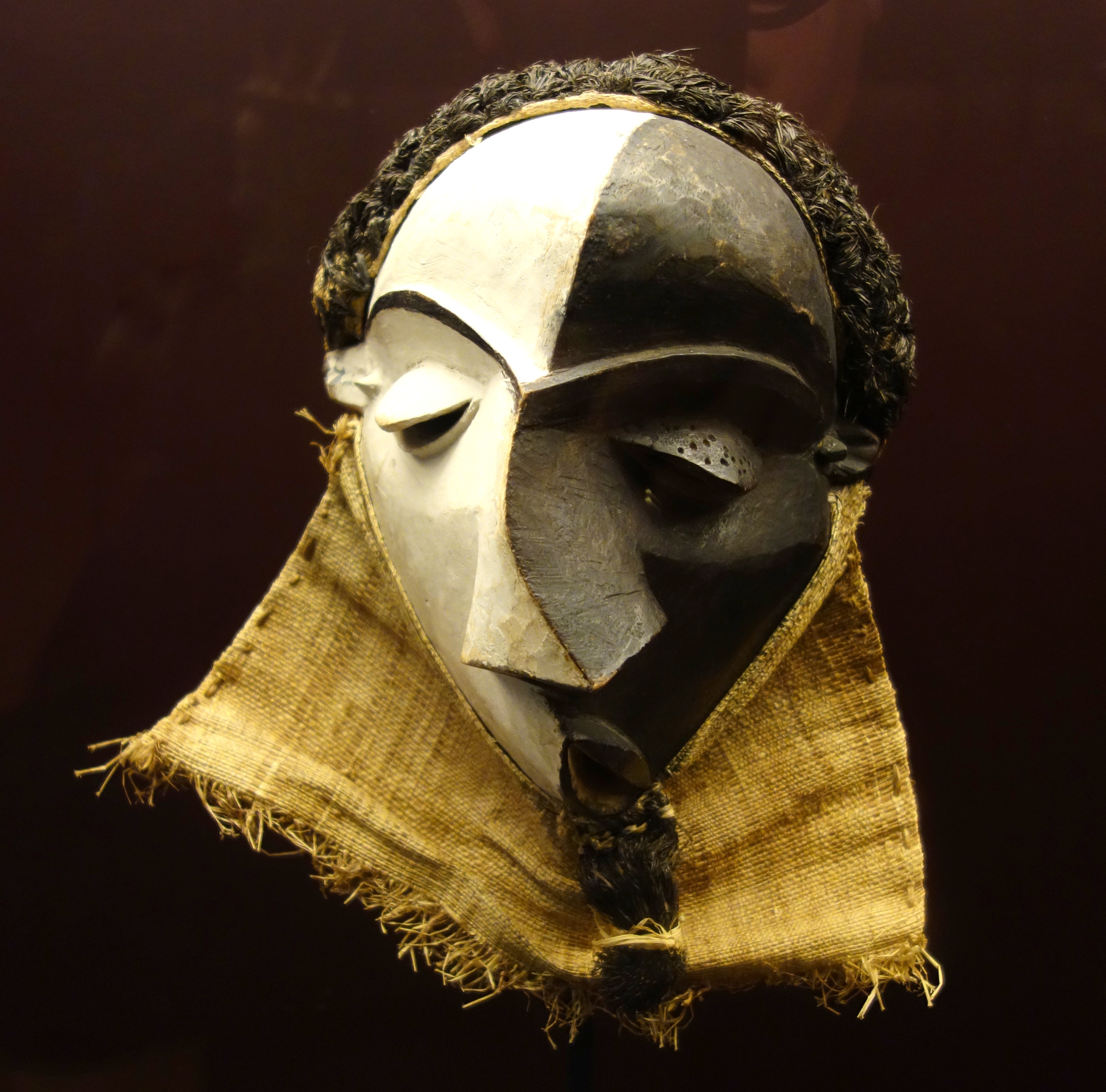
In Sub-Saharan Africa, healing practices are often conducted to prevent misfortune, disease, or community devastation from natural and manmade disasters. For example, among the Bwa and Nuna of Burkina Faso, spirits from the forest engage in masquerade and emerge in the form of crocodiles, antelope, and buffalo to perform in order to protect the community.9 Alternatively, when someone falls ill, particularly without a clear cause, a diviner is often consulted to diagnose the source of the affliction, which could include a range of causes such as religious transgressions, conflict within the community, revenge, possession, “or upsetting the balance between the natural and supernatural worlds,” and to then produce a cure.10
We write of African contexts because they are our professional areas of focus, but magical practices are not exclusive to the continent; it is also the case that the anthropological and ethnographic histories that formed these fields make for a discursive approach. Often the remnants of Egyptian and African magical practice, which become artwork in museum contexts, are used to explain the people that produced them, in turn othering their cultures in contrast with the presumably more readily relatable bodies of work on display. Here, we are turning this approach toward our own experiences living through and observing the sociocultural response to the COVID-19 pandemic.
When presented as the practice of a distant culture, perhaps it seems silly, faraway, and primitive to resort to unproven cures for afflictions that are not properly understood. Yet when COVID-19 was first diagnosed in the US, a plethora of unproven solutions, preventative and curative, were promoted by people of authority to the public who largely did not comprehend what was happening. On March 6, 2020, the US Food and Drug Administration sent a letter to Pastor Jim Bakker and his affiliated companies regarding the solicitation of “unapproved and misbranded products related to Coronavirus Disease 2019. In particular, the FDA and Federal Trade Commission considered the “‘Silver Sol Liquid,’ for sale in the United States and that these products are intended to mitigate, prevent, treat, diagnose, or cure COVID-19 in people. FDA has determined that these products are unapproved new drugs sold in violation.”11 The promotional stunt was endorsed by naturopathic physician Sherrill Sellman, who was named in a separate warning letter in June 2020 for the marketing of her silver products.12 Silver solution is readily available as a health supplement for immunity and antibacterial and antiviral properties, but has not been approved or even evaluated by the FDA. While how much Bakker profited from the scheme has not been disclosed, viewers were charged $80 for four 4-ounce bottles; the equivalent 16 ounces can typically be found at $28 to $73. Arkansas Attorney General Leslie Rutledge claims in her suit that “385 Arkansans spent $60,525 on colloidal silver products promoted by Bakker between January and March.”13
Another miracle cure for COVID-19 was hyped by French microbiologist Didier Raoult, who released the results of a small clinical trial at the Institut Hospitalo-Universitaire Méditerranée Infection on March 16, 2020 that suggested hydroxychloroquine had a 100 percent cure rate.14 Days later, former US President Donald Trump promoted the drug as a miracle cure for COVID, and it was reported on April 5 that the US government had “stockpiled 29 million pills of the drug,”15 with the pharmaceutical companies Novartis, Mylan, Teva, and Amneal upscaling their production.16 But there was no proof that hydroxychloroquine had any impact on COVID, and in November 2020, Raoult was charged with ethics breaches by the Infectious Diseases Society (SPILF) in France and called before a disciplinary panel of the national order of doctors of the Bouche-du-Rhône (resulting in a reprimand on November 5, 2021).17 Not only were these companies profiting from claims not yet proven by the World Health Organization, the FDA, or the European Medicines Agency, but so were the suppliers of the ingredients. While many of these corporations were eager to donate relief funds, equipment, and medicine, including Novartis’s pledge of 130 million doses of hydroxychloroquine and Pfizer’s partnership with Direct Relief to deliver antibiotics and vasopressor therapies to hospitals struggling to keep supplies stocked, this hardly offsets the potential revenue they stood to make off of a pandemic that is ongoing, and could last years.18
Companies profiting from COVID often disregarded public safety in light of new revenue streams. Kenneth B. Klein, a consultant who designs and evaluates clinical trials for drug companies, said about the unproven use of hydroxychloroquine in patients suffering from COVID-19, “What have we got to lose?”19 This push to invest in unproven treatment was infamously followed by Trump’s endorsement on April 23, 2020 of using UV light and disinfectants inside the body, again without scientific grounding.20 The side effect of ingesting disinfectant, of course, is poisoning. Critics correctly pointed this out.21 The makers of Lysol and Clorox distanced themselves from the president’s comments.22 Meanwhile, performative cleaning continued with such fervency that disinfectant wipes continued to be difficult to find on store shelves into fall 2020.23
The economic market of the cure is undeniable. Indeed, various markets saw incredible surges that produce profits for companies and shareholders. This was true for industries all along the supply chain for cleaning supplies, PPE, and pharmaceuticals, but it also led to disruptions in the supply chain as well. Noted in a 2020 study, pushing unproven cures such as Remdesivir24 and hydroxychloroquine was “magical thinking without relying on substantial affirmative evidence of hydroxychloroquine’s efficacy for COVID-19 treatment resulted in considerable supply disruption for people who were taking it for on-label conditions (such as rheumatoid arthritis and lupus) because they had trouble locating it, putting them at risk. The increased demand led to price-gouging.”25 These profits have a human and an environmental cost. The question also remains: how effective are some of these measures, such as wearing gloves to pump your gas or disinfecting your delivered groceries?26 Is this reducing the risk of spreading viruses, or is it simply magical thinking?27 If the burden of proof is laid on determining a purely causal relationship, the answer is, the latter.
Yet it would be inaccurate to say that magical behaviors do nothing and have no effect. As we have learned from studying distant cultures, these behaviors have emotional impacts on the performer and the audience. They are social and cultural negotiations, that is, they allow participants to position themselves within (or without) a group. They also occasionally produce remnants. Depending on their source and perceived value, the remnants of performing magic can end up collected as artifacts, and/or art. In fact, the rapid-response collection of COVID ephemera by museums began as early as April 2020.28 Of course, the museum is itself a site of rationalization and control, of collecting, of cataloguing, of containing in cases and vitrines, of directing the public to function in prescribed ways, and of archiving cultural memory as a means of shared identity construction, all to what Tony Bennett has called “the very pinnacle of the exhibitionary order of things [exhibitions] constructed.”29 Yet every COVID remnant that does not end up in a collection will ultimately become waste. These are all real impacts. What these actions do not do, however, is prevent or cure COVID.
And I Must Scream is no exception to the museumification of the pandemic, part of an ongoing discourse of disease within these institutions.30 The exhibition was well into the planning stages by spring 2020, and so COVID was a late addition, if useful complement, to the show’s concept. Here, Amie Esslinger contributed distorted cellular installations that examine the point at which the body’s ability to fight off invaders tips, and the virus or tumor begins to multiply and take over.
Esslinger’s works for And I Must Scream are a direct response to the anxiety we have all faced, albeit to different degrees, in the last two years. Like the diseases and dangers that cannot be seen and therefore are only given shape through a cure, Esslinger gives shape to the dangers that we cannot see; just like the ancient Egyptians used hippos and bound foreigners to give shape to both real, specific dangers and the existential anxiety of merely existing in a world of chaos, she visualizes uncertainty so that we can contain it within the gallery walls, even as the forms lurk in shadows and leak into the corners.
COVID is only the most recent and salient example of this orderly cycle of conjuring, production, marketing, and othering, because it is happening at the time of writing, and because it is truly and immediately out-of-control and global. Yet further instances abound in Western memory: the AIDS epidemic that emerged in the 1980s has long been characterized as punishment for perverse behavior.31 According to Elisa Gabbert, “As late as 1918, physicians named ‘cosmic influence’ as a factor in the mysteriously deadly Spanish flu — ‘influence’ and ‘influenza’ have the same etymology, a ‘flowing in,’ as of unseen, ethereal forces.”32 Of the Black Death, she writes that “the apparent senselessness of a new epidemic makes it even more frightening, so that every plague is a double plague of contagion and fear.”33 The anxiety, personal and social, that springs around this uncertainty creates a market for preventions and cures, less so for the disease, but to restore a sense of order and control. Per Aaron Bernstein: “In the context of emerging infections of course we’re not thinking upstream because there are huge amounts of money to be made downstream. You can make money on vaccines, you can make money on tests. There’s a return on investment proposition.”34
When the theater of control is documented at a safe distance, geographically or in antiquity, it is constructed as primitive, as magical. In our own lives, amid a pandemic, the same types of performance are construed as politics: a theater of control whose goals also often exist outside the natural laws of cause and effect. We choose to believe its rituals will help us stave off chaos, just as the magicians of so-called antiquity did. It would be myopic to presume we will not ourselves be judged; time, of course, will tell. We remain conscious of the fact that “when we don’t understand the cause of a disease or how to treat it,” as Gabbert surmises, “we resort to magical thinking.” 35
Notes
-
Emily Favreau (@emilyfavreau), “At the beginning of my pregnancy, I made a conscious effort to switch to ‘green’ cleaning products. Today, I used a Lysol wipe on an apple.” Twitter post, March 28, 2020, 10:06 p.m., https://twitter.com/emilyfavreau/status/1244023100930318336. ↩︎
-
Emmanuel Goldman, “Exaggerated risk of transmission of COVID-19 by fomites,” The Lancet 20, no. 8 (August, 2020), 892-893. ↩︎
-
Derek Thompson, “Hygiene Theater Is a Huge Waste of Time,” The Atlantic, July 27, 2020, https://www.theatlantic.com/ideas/archive/2020/07/scourge-hygiene-theater/614599/. Derek Thompson, “Hygiene Theater is Still a Huge Waste of Time,” The Atlantic, February 8, 2021, https://www.theatlantic.com/ideas/archive/2021/02/hygiene-theater-still-waste/617939/. ↩︎
-
James Fallows, “‘Like a Full-Body Massage’: Thinking About the TSA,” The Atlantic, November 23, 2010, https://www.theatlantic.com/national/archive/2010/11/like-a-full-body-massage-thinking-about-the-tsa/66923/. ↩︎
-
Robert K. Ritner, The Mechanics of Ancient Egyptian Magical Practice (Chicago: The Oriental Institute, 1993), 1. ↩︎
-
Ritner, 9-13. ↩︎
-
Kerry Muhlestein, “Execration Ritual,” in UCLA Encyclopedia of Egyptology, edited by Jacco Dieleman and Willeke Wendrich (Los Angeles, 2008), https://escholarship.org/uc/item/3f6268zf, 3. ↩︎
-
Zoe S. Strother, Inventing Masks: Agency And History In The Art Of The Central Pende, (Chicago: University of Chicago Press, 1998),139-153. ↩︎
-
Barbara Thompson, “Ritual Healing,” Art and Life in Africa, University of Iowa Stanley Museum of Art, accessed February 16, 2021, https://africa.uima.uiowa.edu/chapters/arts-of-healing/rituals-of-healing/?start=5. ↩︎
-
Thompson, “Ritual Healing.” ↩︎
-
Letter from William A. Correll and Richard A. Quaresima to The Jim Bakker Show, March 6, 2020, accessed February 16, 2021, https://www.fda.gov/inspections-compliance-enforcement-and-criminal-investigations/warning-letters/jim-bakker-show-604820-03062020. See also Matthew S. Schwartz, “Missouri Sues Televangelist Jim Bakker for Selling Fake Coronavirus Cure,” National Public Radio, March 11, 2020, https://www.npr.org/2020/03/11/814550474/missouri-sues-televangelist-jim-bakker-for-selling-fake-coronavirus-cure. ↩︎
-
Letter from William A. Correll and Richard A. Quaresima to Dr. Sherrill Sellman, June 1, 2020, accessed February 16, 2021, https://www.fda.gov/inspections-compliance-enforcement-and-criminal-investigations/warning-letters/dr-sherrill-sellman-607964-06012020. ↩︎
-
John Moritz, “Televangelist loses bid to block inquiry,” Arkansas Democrat Gazette, August 29, 2020, https://www.arkansasonline.com/news/2020/aug/29/televangelist-loses-bid-to-block-inquiry/. ↩︎
-
Scott Sayare, “He Was a Science Star. Then He Promoted a Questionable Cure for Covid-19,” The New York Times Magazine, May 21, 2020, https://www.nytimes.com/2020/05/12/magazine/didier-raoult-hydroxychloroquine.html. ↩︎
-
Michael Crowley, Maggie Haberman, and Katie Thomas, “Ignoring Expert Opinion, Trump Again Promotes Use of Hydroxychloroquine,” The New York Times, April 5, 2020. https://www.nytimes.com/2020/04/05/us/politics/trump-hydroxychloroquine-coronavirus.html. ↩︎
-
Sandra Levy, “Pharma companies ramp up production of hydroxychloroquine to support COVID-19 response,” Drug Store News, March 20, 2020. https://drugstorenews.com/pharma-companies-ramp-production-hydroxychloroquine-support-covid-19-response. ↩︎
-
“French professor faces disciplinary case over hydroxychloroquine claims,” The Guardian, November 12, 2020, https://www.theguardian.com/world/2020/nov/12/covid-professor-didier-raoult-hydroxychloroquine. See also “Controversial French doctor Raoult in disciplinary hearing over notorious Covid-19 tips,” France 24, November 5, 2021. https://www.france24.com/en/europe/20211105-controversial-french-doctor-raoult-in-disciplinary-hearing-over-notorious-covid-19-tips. ↩︎
-
See for example “Pfizer Partners With Direct Relief to Provide Critical Covid-19 Supplies to Hospitals,” accessed January 10, 2022, https://www.pfizer.com/news/hot-topics/pfizer_partners_with_direct_relief_to_provide_critical_covid_19_supplies_to_hospitals; “Novartis announces broad range of initiatives to respond to COVID-19 Pandemic; Creates USD 20 million global fund to support impacted communities,” March 17, 2020, accessed January 10, 2022, https://www.novartis.com/news/media-releases/novartis-announces-broad-range-initiatives-respond-covid-19-pandemic-creates-usd-20-million-global-fund-support-impacted-communities; “Novartis commits to donate up to 130 million doses of hydroxychloroquine to support the global COVID-19 pandemic response,” March 20, 2020, accessed January 10, 2022, https://www.novartis.com/news/media-releases/novartis-commits-donate-130-million-doses-hydroxychloroquine-support-global-covid-19-pandemic-response. ↩︎
-
Crowley, Haberman, and Thomas, “Ignoring Expert Opinion, Trump Again Promotes Use of Hydroxychloroquine.” ↩︎
-
“Coronavirus: Outcry after Trump suggests injecting disinfectant as treatment,” BBC News, April 24, 2020. https://www.bbc.com/news/world-us-canada-52407177. ↩︎
-
Poppy Noor, “Please don’t inject bleach’: Trump’s wild coronavirus claims prompt disbelief,” The Guardian, April 24, 2020, https://www.theguardian.com/us-news/2020/apr/24/trump-disinfectant-bleach-coronavirus-claims-reaction. ↩︎
-
Maggie Haberman, Christine Hauser, Katie Rogers, and Alan Yuhas. “Trump’s Suggestion That Disinfectants Could Be Used to Treat Coronavirus Prompts Aggressive Pushback,” New York Times, April 24, 2020, https://www.nytimes.com/2020/04/24/us/politics/trump-inject-disinfectant-bleach-coronavirus.html. ↩︎
-
Julie Creswell, “‘I Had Lost All Hope’: Clorox Wipes Are Still the Hard-to-Find Pandemic Item,” New York Times, October 5, 2020, https://www.nytimes.com/2020/10/05/business/clorox-disinfecting-wipes-pandemic.html. ↩︎
-
As of early 2022, Remdesivir has been approved for the treatment of COVID-19 by the US Food and Drug Administration; this should not diminish the fact that it was promoted as a cure prior to clinical studies demonstrating its efficacy. See National Institutes of Health, Remdesivir,” NIH COVID-19 Treatment Guidelines, last updated February 24, 2022, https://www.covid19treatmentguidelines.nih.gov/therapies/antiviral-therapy/remdesivir/. ↩︎
-
Christopher L. Atkinson, Clifford McCue, Eric Prier, and Allison M. Atkinson. “Supply Chain Manipulation, Misrepresentation, and Magical Thinking During the Covid-19 Pandemic,” American Review of Public Administration 50, no. 6-7 (2020): 628-634, 631. ↩︎
-
This has been discussed quite extensively. See Thompson, “Hygiene Theater is a Waste of Time.” ↩︎
-
We acknowledge that it is difficult to prove the efficacy of many forms of traditional medicine, particularly those that involve both herbalism and a spiritual component. Aceme Nyika states that “in most cases in practice there is lack of clarity as to whether a Traditional Healer is practicing as a herbalist or as a divine healer. It is such ambiguity that tends to shroud the practice of [African traditional medicine] with so much sacredness that any attempt to question anything associated with the practice is perceived by some people not only as a taboo but also as one of the manifestations of neocolonialism.” Aceme Nyika, “The ethics of improving African traditional medical practice: Scientific or African traditional research methods?” Acta Tropicalia 112, supplement 1 (November 2009): S32-S36, https://www.ncbi.nlm.nih.gov/pmc/articles/PMC7092799/. ↩︎
-
Sarah Cascone, “Museums Are Urgently Collecting Homemade Masks and Other Ephemera From the Coronavirus Pandemic to Document History as It Unfolds,” Artnet News, April 8, 2020, https://news.artnet.com/art-world/museums-starting-coronavirus-collections-1827606. ↩︎
-
Tony Bennett, “The Exhibitionary Complex,” in Thinking about Exhibitions, edited by Reese Greenberg, Bruce W. Ferguson, and Sandy Nairne (London and New York: Routledge, 1996), 104. ↩︎
-
Relatively early in the AIDS crisis, museums used the gallery space to respond to the epidemic, and AIDS remnants and ephemera have become the primary content of these exhibitions. See, for example, the exhibition by Group Material AIDS and Democracy: A Case Study, Dia Art Foundation, 1988, or their AIDS Timeline installation at the University of California, Berkeley (1989), Wadsworth Atheneum (1990), and Whitney Museum of American Art (1991). Alison Green, “Citizen Artists: Group Material,” Afterall: A Journal of Art, Context and Enquiry 26 (spring 2011): 21-22. For a more general overview, see Tara Burk, “From the Streets to the Gallery: Exhibiting the Visual Ephemera of AIDS Cultural Activism,” Journal of Curatorial Studies 2, no. 1 (2013): 32-53. A more recent example of displaying illness more broadly is the Wellcome Collection, Misbehaving Bodies: Jo Spence and Oreet Ashery (2019-2020). ↩︎
-
See for example, Susan Sontag, AIDS and Its Metaphors (New York: Farrar, Straus, Giroux, 1989); Douglas Crimp, “How to Have Promiscuity in an Epidemic,” October 43 (Winter 1987); Helms AIDS Amendments, 1987; Mark R. Kowalewski, “Religious Constructions of the AIDS Crisis,” Sociological Analysis 51, no. 1 (1990); Elisa Gabbert, Unreality of Memory and Other Essays (New York: Farrar, Straus and Giroux, 2020), 83. ↩︎
-
Gabbert, Unreality of Memory, 84. ↩︎
-
Gabbert, Unreality of Memory, 83. ↩︎
-
Greg Dalton, “Killer Combination: Climate, Health, and Poverty,” Climate One, February 12, 2021, https://www.climateone.org/audio/killer-combination-climate-health-and-poverty. ↩︎
-
Gabbert, Unreality of Memory, 83. ↩︎
